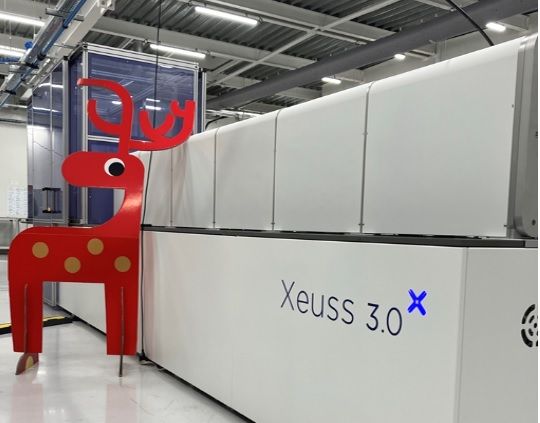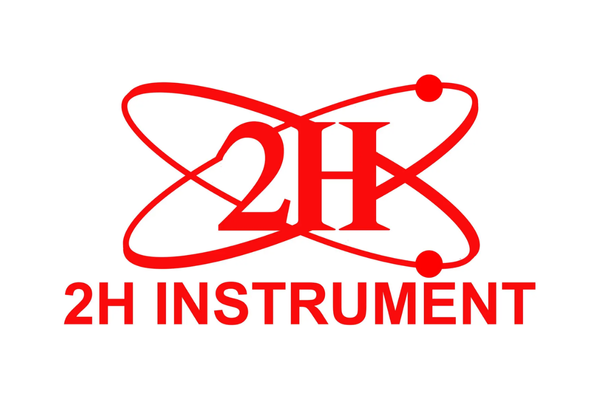A grant of DKK 11 million from the Novo Nordisk Foundation for advanced X-ray equipment brings Roskilde University into world class research into the nanostructure of materials.

A green, environmentally friendly future requires new smart materials, e.g. for the production of ultra-thin, flexible solar cells with high efficiency. It can also be integrated circuits for computers and mobile phones, which are smaller and more energy-saving than those used today. Or it could be substances for tailor-made medicines or new ingredients for the food industry.
The new smart materials are typically assembled from building blocks that are the size of large molecules and can spontaneously organize themselves into complex patterns. Associate Professor in Physics Dorthe Posselt from the Department of Nature and Environment at Roskilde University has received a million dollar grant from the Novo Nordisk Foundation for an advanced X-ray facility that gives the RUC researchers the opportunity to study such patterns and structures and get to know the properties of the material under different influences. In this way, researchers gain knowledge that can help to develop smart materials that can also benefit the environment and climate of the future.
Promotes Danish research
Dorthe Posselt looks forward to, together with research colleagues and the business community, contributing to expanding and enhancing Danish research and innovation in smart materials with the instrument, which has been dubbed RUCSAXS:
“RUCSAXS will strengthen cooperation with researchers and companies outside Roskilde University as well, as we can now offer access to and expertise in an advanced measurement method at the highest international level. In the past, my colleagues and I have had to travel to, for example, the USA, France or Italy to carry out our experiments. With RUCSAXS, we get much more radiation time available, and transporting delicate samples is unproblematic when the measurements take place so close to our own laboratories. We can also study processes over a much longer period of time than when we have to travel abroad, where we typically only have 4-5 days of measurement time at a time,” explains Dorthe Posselt.
Cooperation with regional business
The new scientific equipment at Roskilde University will, for example, contribute to the development of nanolithography, which gives researchers the opportunity to ‘print’ structures on a nanometer scale directly on different materials. Nanolithography can improve and reduce the size of the integrated circuits, which are an indispensable part of the computer and the mobile phone, thus providing the opportunity for the development of new forms of communication technology that are also energy-saving.
Dorthe Posselt, who is a physicist herself, expects that colleagues from other scientific disciplines such as chemistry, molecular biology and environmental biology will also benefit from RUCSAXS:
“At Roskilde University, the geographical distance between different science subject groups is not great, and in FRUSTMI, the RUC Center for Frustrated Molecular Interactions, we take the time to meet and discuss each other’s problems, so that we get to know each other’s professional language and new ideas occurs,” she says and continues:
“RUCSAXS will also strengthen collaboration with researchers outside Roskilde University. I expect that a lively and international environment will be built around the equipment. The grant enables us to invite international researchers and collaboration partners to visit for workshops, joint experiments and the like. I also have contact with various companies about using the instrument.”
Becomes part of new education
The students also get to enjoy RUCSAXS, for example in connection with the new interdisciplinary master’s program ‘Physics and Scientific Modelling’, where the students have the opportunity to try their hand at RUCSAXS during their studies.
“The students get a unique chance to carry out experiments on equipment that cannot be found quite like it at other Danish universities. The students can, among other things, choosing to work with RUCSAXS on biophysical issues,” says Dorthe Posselt.
8 FACTS about RUCSAXS
- RUCSAXS is an abbreviation for ‘Roskilde University Small-Angle X-ray Scattering’ and the project is called the Roskilde University Interdisciplinary X-ray Scattering Hub.
- The use of RUCSAXS is anchored in the subject group for physics and mathematics (IMFUFA) and the research center FRUSTMI (Centre for Frustrated Molecular Interactions) at the Department of Nature and Environment.
- The instrument is approximately 8 meters long and will be installed in the basement under one of the laboratory buildings at Roskilde University.
- RUCSAXS works by an X-ray wave hitting a material and scattering. The scattered radiation forms a pattern with light and dark areas. Based on the pattern, you can calculate back and say something about the nanostructure in the material.
- The typical material investigated in RUCSAXS are nanoparticles floating around in a liquid. These can be, for example, polymers (long molecular chains), cell membranes, metal and plastic nanoparticles or clusters of protein molecules.
- RUCSAXS also offers, as something special, the opportunity to study nanostructured surfaces and ultrathin coatings with a tailored nanostructure.
- The instrument makes it possible to follow changes in the structure of a material over time, for example when the temperature changes, the material is pulled or it is exposed to a magnetic field.
- RUCSAXS offers the opportunity to develop new types of test setups in collaboration with RUC’s local workshop, which can construct and develop advanced equipment for use in teaching and research at a high level of craftsmanship.
Source: https://ruc.dk/nyheder/nyt-stort-roentgenanlaeg-skal-hjaelpe-rucforskere-med-udvikle-fremtidens-smarte-og
